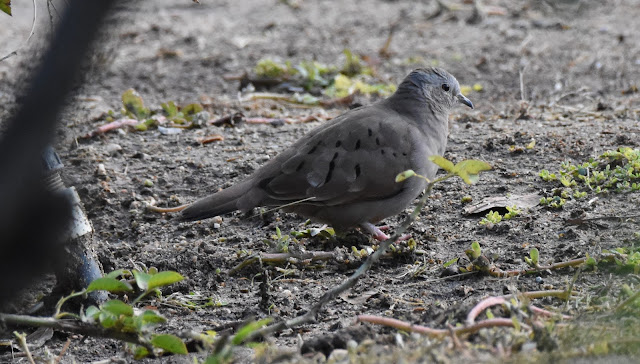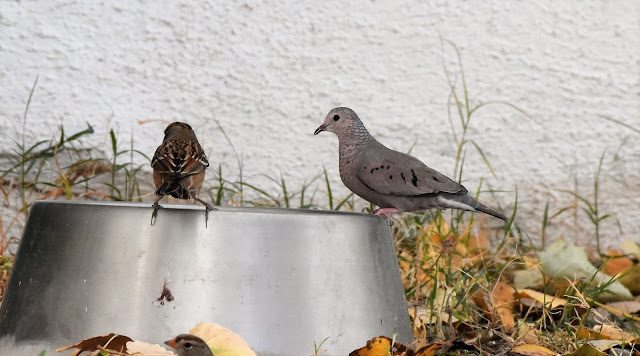 |
| A Rock Squirrel keeps on the look out for a very hungry Red-tailed Hawk in the area |
Before my trek to Oregon, I began to feel pain around the left side under my rib cage. This routinely has happened to me since I was 32 and always during the same time period. I'm not sure what it is, but I end up in the ER every time and every time they tell me I'm fine. And then I throw money out the window. Money that could be used to pay off bills OR go on a birding adventure.
 |
| Chipping Sparrows at Reid Park |
 |
| American Pipit at Canoa Ranch |
 |
| A Verdin interrupts a Brewer's Sparrow's alone time |
 |
| Grasshopper Sparrow at Canoa Ranch |
 |
| A Red-tailed Hawk hunts and jumps off a perch |
 |
| Vesper Sparrow |
 |
| Phainopepla |
 |
| Black-crowned Night Heron, juvenile |
 |
| Black-tailed Prairie Dog |
 |
| A rare Ruddy Ground Dove on my survey grounds at Reid Park |



















































